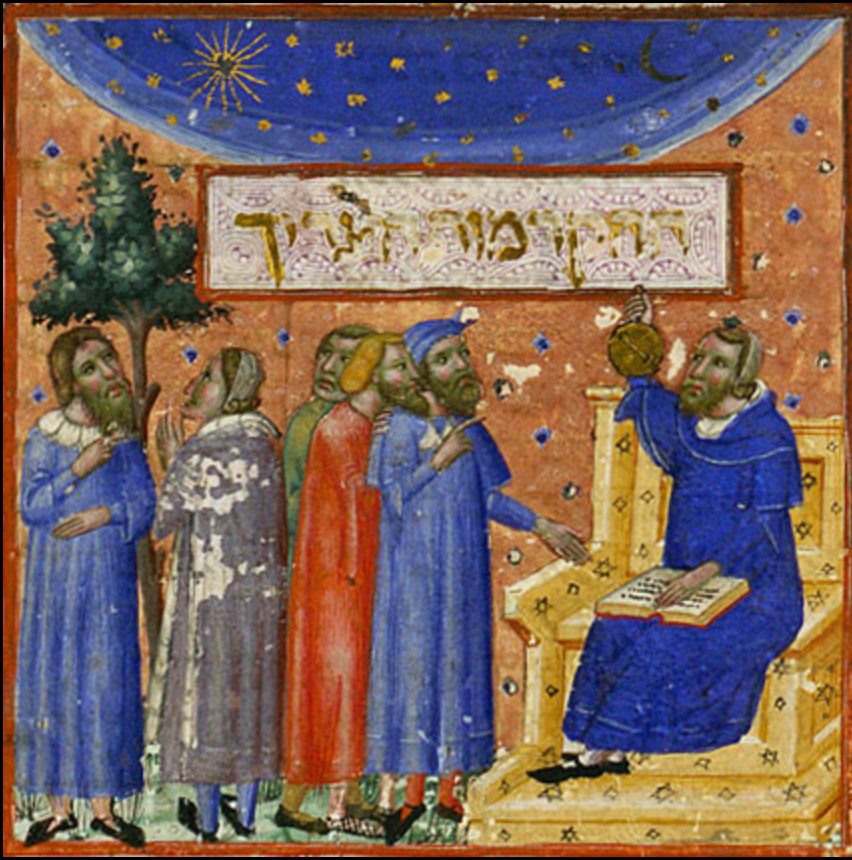Noam Zeffren
Tova Chein
Robert Stern
New York, New York, United States

Jewish ingenuity has contributed widely to theology, philosophy, science, and many other areas of human endeavor. To the practice of medicine, influences from Jewish luminaries include Moses Maimonides, Sigmund Freud, Paul Ehrlich, and Jonah Salk. Less recognized are contributions from the Old Testament (or Torah) and from the rabbinic literature. These include unique health measures apparently implemented at a time when the causes of diseases and their implications for public health were virtually unrecognized.
The very first public health measure in recorded human history could well be the description in the Torah of how to deal safely with lepers and other people with infectious disorders. The lepers, as described in Leviticus 13:45-46, were placed in a separate camp far removed from the rest of the Israelites:
“All the days that the affliction is upon him he shall remain contaminated. He shall dwell in isolation…outside the camp.”
This containment of the lepers prevented contamination with a potentially lethal infectious disease. Indeed, “leper colonies” were a recognized method of separating affected patients in more modern times, and this concept was probably based on this biblical ruling.
The Hebrew term used, ‘metzorah,’ is loosely translated as “leper,” and is derived from the King James translation of the Bible (1604–1611). A precise translation of the term from the Hebrew remains ambiguous but some infectious disorder with skin manifestations may be implied.
Another example provided by the Torah describes prohibitions against eating certain foods, yet another example of a preemptive public health measure. The rabbinic law of “shechita,” the techniques of Jewish ritual slaughter, includes descriptions of the many steps that prepare an animal to become fit for human consumption, to become a “kosher” product.
Deuteronomy 12:21 states “Thou shalt slaughter of thy herd…as I have commanded…”
One of the ceremonies of the slaughtering process, detailed in the rabbinic writings known as the Mishna and the Talmud, include close examination of the lungs. One of the steps, among many, is to inflate the lungs under water and to look for air-bubbles rising to the surface. According to Jewish Law, submerged lungs that produce such air bubbles makes the animal “not kosher,” and consumption of any meat from that source is prohibited.
We now know that these air bubbles reflect a disruption of what should be an otherwise intact pleural surface by pleural adhesions that most likely reflect Ghon foci from primary bovine tuberculosis by Mycobacterium bovis. The infectious granulomas from this organisms form cavities in the lower zones of the bovine lung and when extended to the pleural surface cause pleural disruptions. A similar process occurs in humans, and is among the very early signs of tuberculosis. As human beings are susceptible to infection from bovine tuberculosis, this particular ritual of being kosher, embodying the concepts of “kashrut,” may well be the first documented recognition of tuberculosis as an infectious process, and acknowledges the perils of consuming meat from a tuberculous cow.
It is for this reason, recognized many centuries later, that pasteurization of cow’s milk was initiated as a protection from cows with tuberculosis was initiated. This was followed many centuries later by the studies of Louis Pasteur and also of Robert Koch, who discovered the tuberculosis bacillus in 1882.
In addition, inspection is conducted for tears along the entire gastrointestinal tract. Such disruptions would also eliminate the animal from being kosher as being possible sources of peritonitis that could contaminate the meat with infectious organisms.
Such contributions to medicine, documented in the very early Jewish literature, have often remained unrecognized. Additional examples may also be found in the vast Judaic literature, including the Mishna, Talmud, and other rabbinic writings, as well as from Old Testament. They are important very early Jewish contributions to medicine and human health, some more than two thousand years old.
NOAM ZEFFREN, OMSIV and TOVA CHEIN, DO are currently students at the Touro College of Osteopathic Medicine. ROBERT STERN, MD has served as a professor in the Department of Basic Medical Sciences at Touro College since 2009.

Leave a Reply